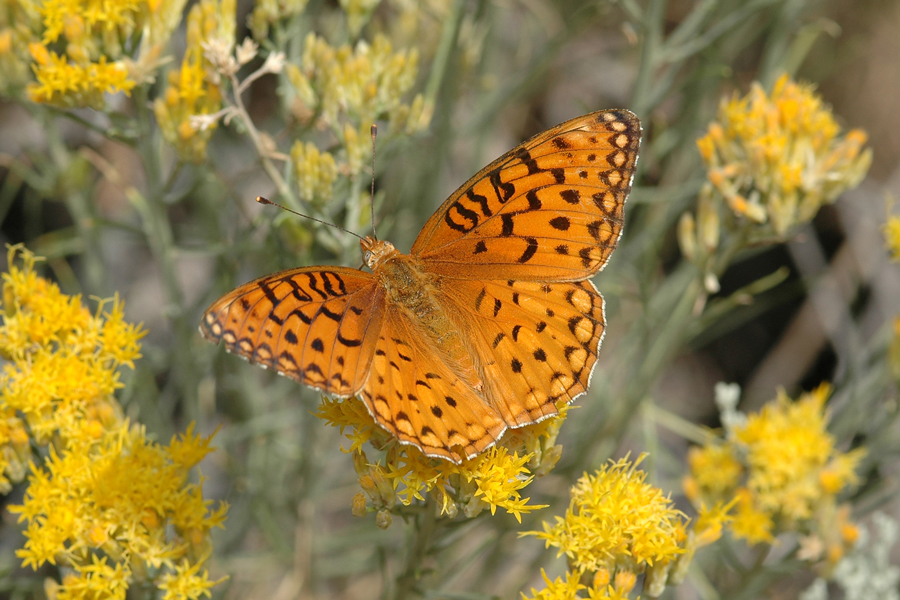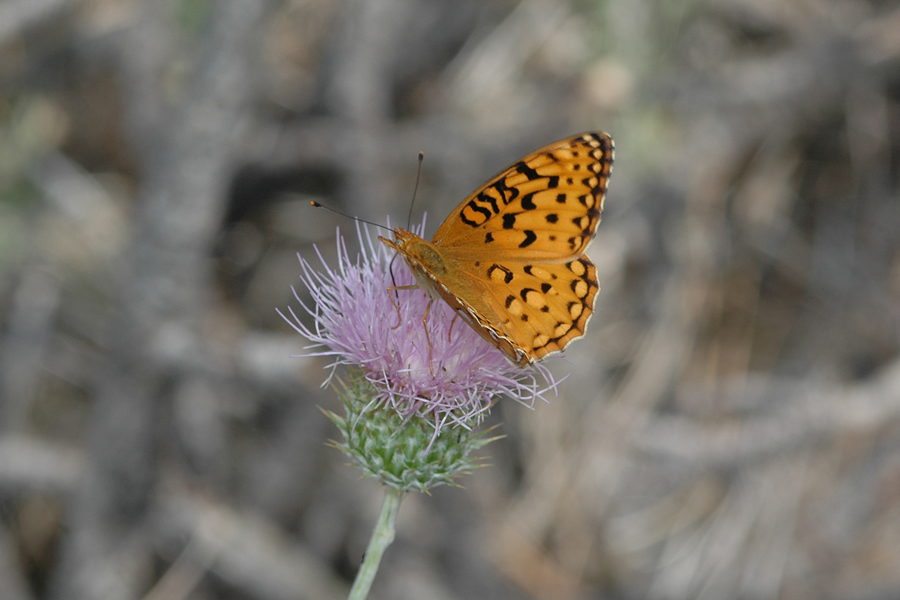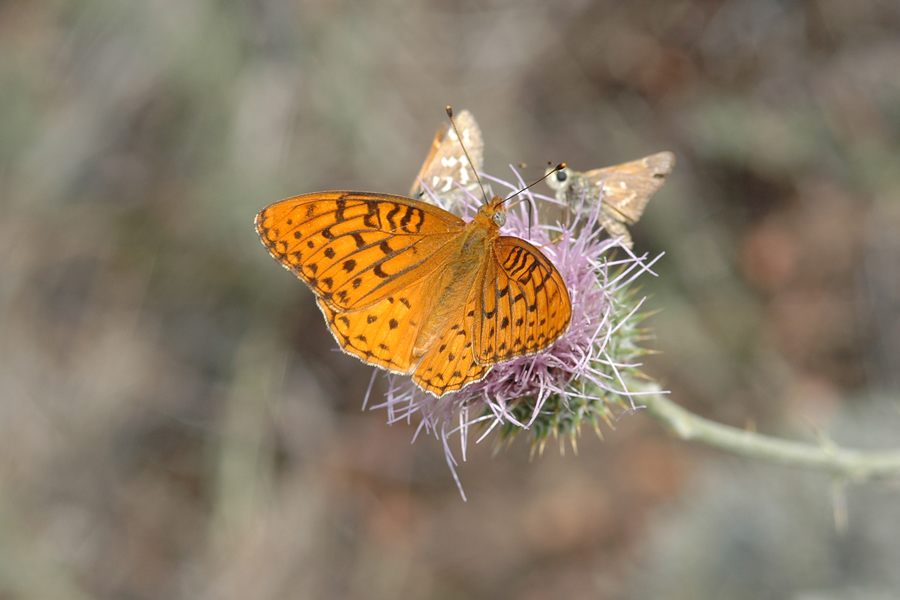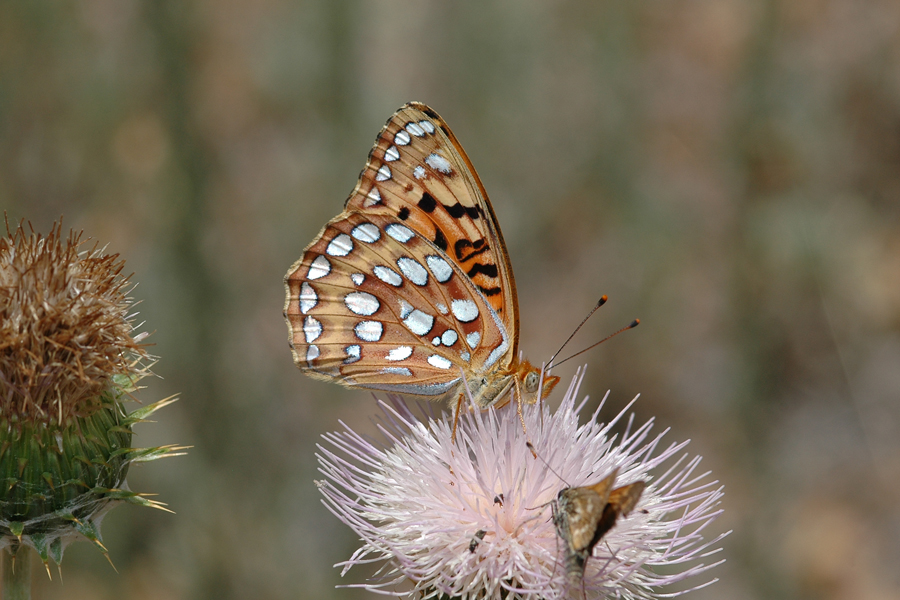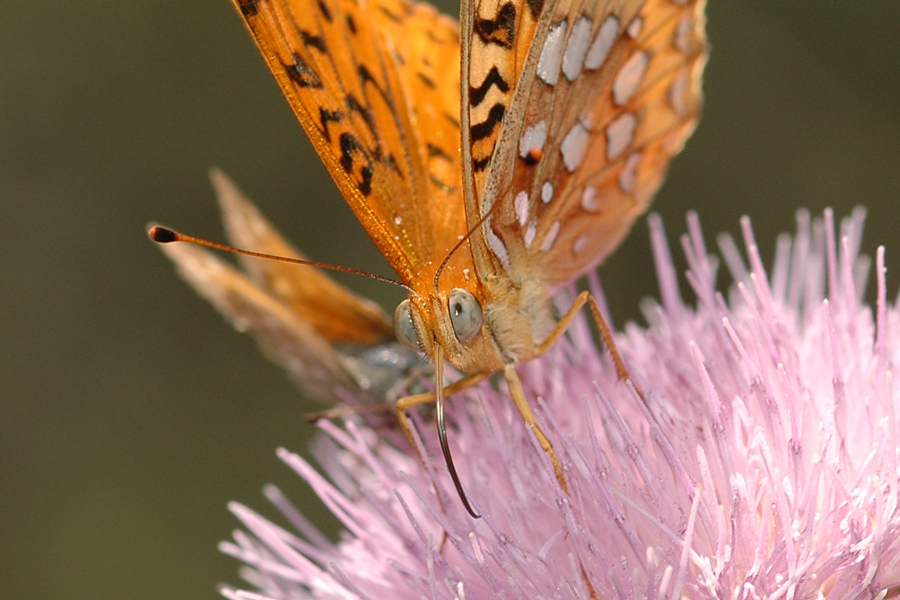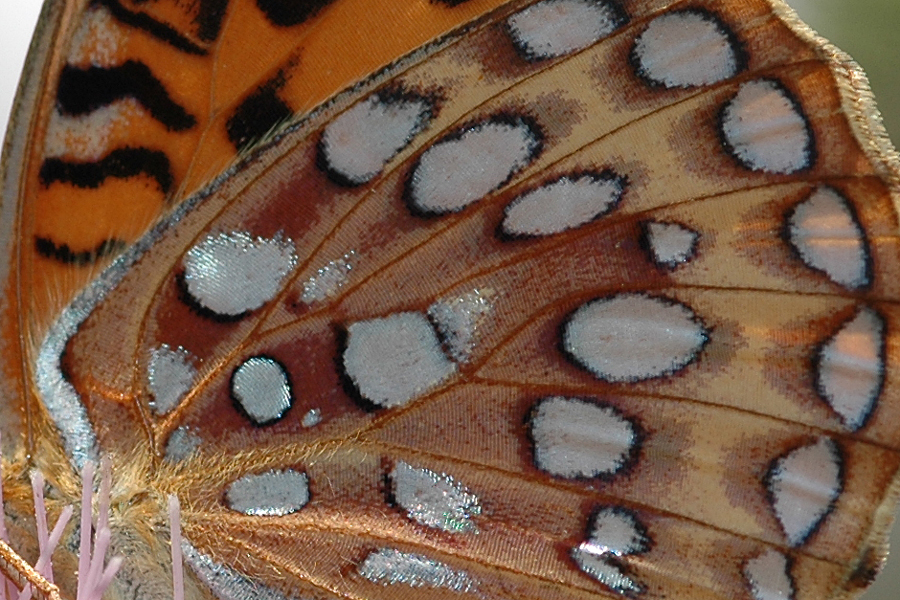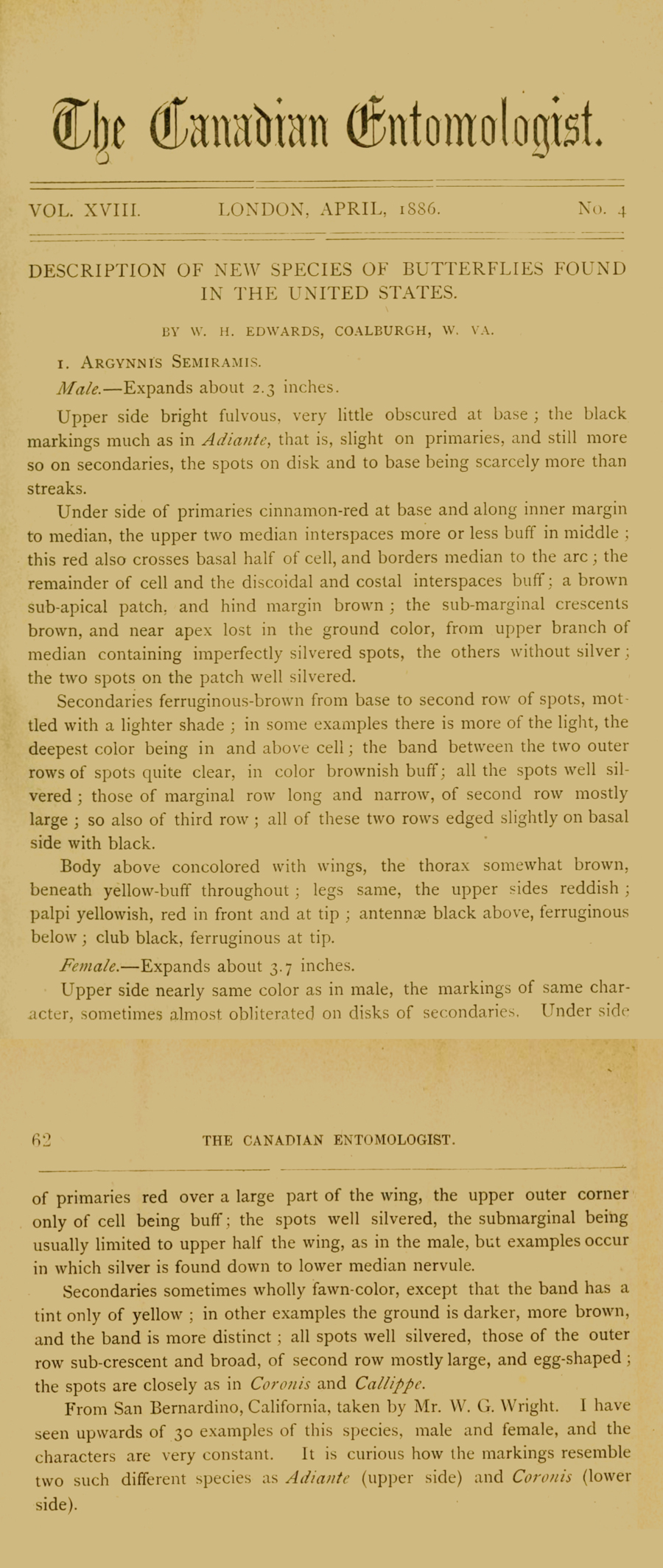Argynnis coronis semiramis
Coronis Fritillary
The type locality for this fritillary is one of my favorite spots to visit: Camp Wasewagan (or at least the dirt road that leads past it) in Seven Oaks, south of Big Bear in the San Bernardinos. This area was devastated by flooding in the storms late in 2023, and the road to this spot was closed for months. Probably didn't hurt the butterflies, though. This bright golden-orange butterfly is fairly widespread in distribution. It's common all around the Big Bear area, and I've also seen it in the San Jacintos in various places. I believe larvae are nocturnal, so one isn't likely to encounter them while out hiking. Females place eggs where the larval food plant - violets - are going to grow the next year.
A female coronis fritillary, subspecies semiramis, taking nectar on rabbitbrush. Caribou Creek area, north of Big Bear Lake. August 23, 2005.
Another female, one of many Argynnis coronis semiramis that were taking nectar on thistles along the Pacific Crest Trail west of Polique Cyn Rd, Big Bear, July 2, 2006. This butterfly is easily encountered in the Big Bear area late in the summer. All photos below are from the same hike.
A male coronis fritillary.
Ventral of the coronis fritillary, sharing a thistle with Leussler's Branded Skipper.
A closer look at a coronis fritillary taking nectar.
Close-up of the ventral scaling of Speyeria coronis semiramis.
The original description by William Henry Edwards appeared in the Canadian Entomologist in 1886. Edwards based the description on specimens collected by one of California's earliest lepidopterists, William G. Wright (1831–1912).
©Dennis Walker
